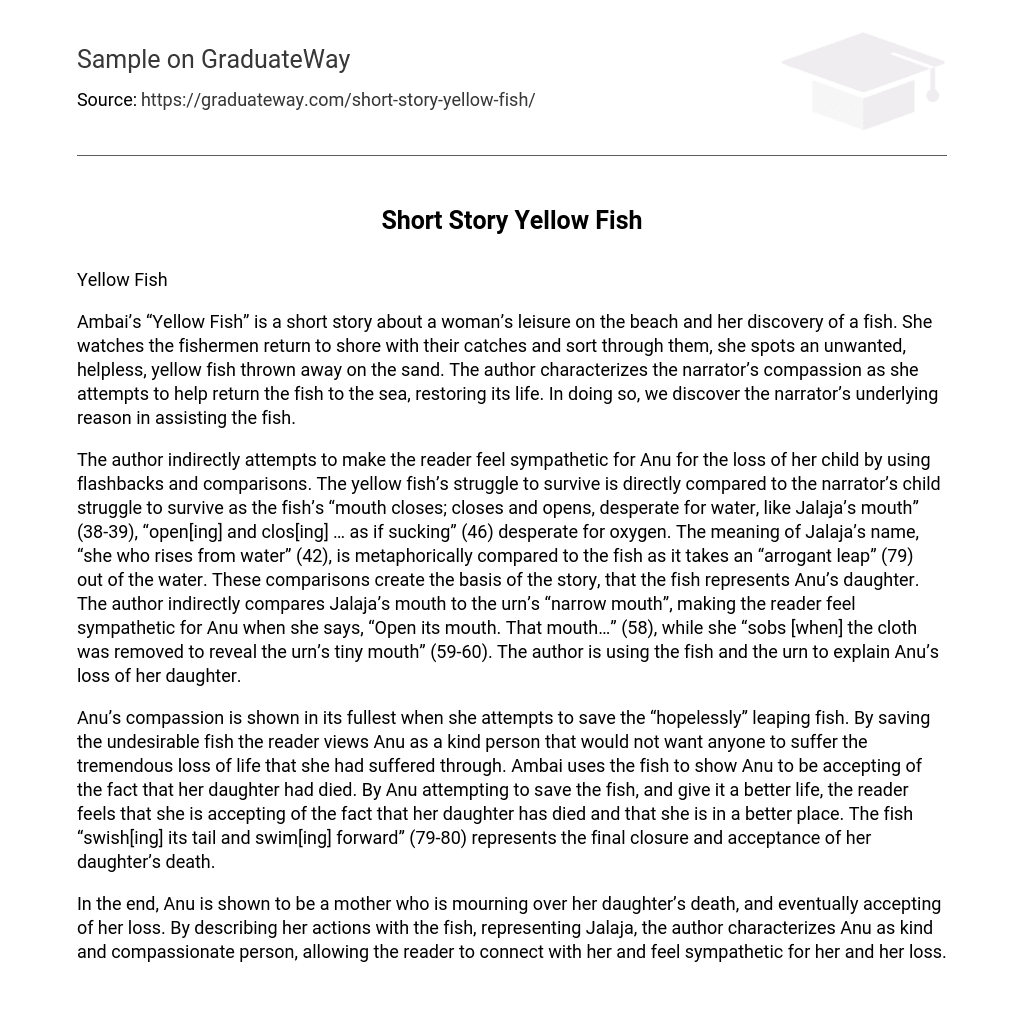Yellow Fish
Ambai’s “Yellow Fish” is a short story about a woman’s leisure on the beach and her discovery of a fish. She watches the fishermen return to shore with their catches and sort through them, she spots an unwanted, helpless, yellow fish thrown away on the sand. The author characterizes the narrator’s compassion as she attempts to help return the fish to the sea, restoring its life. In doing so, we discover the narrator’s underlying reason in assisting the fish.
The author indirectly attempts to make the reader feel sympathetic for Anu for the loss of her child by using flashbacks and comparisons. The yellow fish’s struggle to survive is directly compared to the narrator’s child struggle to survive as the fish’s “mouth closes; closes and opens, desperate for water, like Jalaja’s mouth” (38-39), “open[ing] and clos[ing] … as if sucking” (46) desperate for oxygen. The meaning of Jalaja’s name, “she who rises from water” (42), is metaphorically compared to the fish as it takes an “arrogant leap” (79) out of the water. These comparisons create the basis of the story, that the fish represents Anu’s daughter. The author indirectly compares Jalaja’s mouth to the urn’s “narrow mouth”, making the reader feel sympathetic for Anu when she says, “Open its mouth. That mouth…” (58), while she “sobs [when] the cloth was removed to reveal the urn’s tiny mouth” (59-60). The author is using the fish and the urn to explain Anu’s loss of her daughter.
Anu’s compassion is shown in its fullest when she attempts to save the “hopelessly” leaping fish. By saving the undesirable fish the reader views Anu as a kind person that would not want anyone to suffer the tremendous loss of life that she had suffered through. Ambai uses the fish to show Anu to be accepting of the fact that her daughter had died. By Anu attempting to save the fish, and give it a better life, the reader feels that she is accepting of the fact that her daughter has died and that she is in a better place. The fish “swish[ing] its tail and swim[ing] forward” (79-80) represents the final closure and acceptance of her daughter’s death.
In the end, Anu is shown to be a mother who is mourning over her daughter’s death, and eventually accepting of her loss. By describing her actions with the fish, representing Jalaja, the author characterizes Anu as kind and compassionate person, allowing the reader to connect with her and feel sympathetic for her and her loss.





